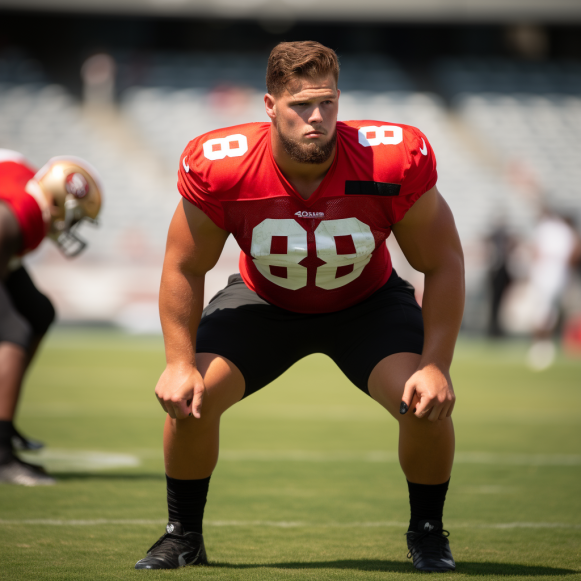Oakland A’s relocation to Las Vegas doesn’t pass smell test, former Expos, Marlins prez says

David Samson has been down MLB relocation road before. He sees how Oakland Athletics’ relocation managed by Dave Kaval can go awry
The Oakland A’s are nearing the end of their attempt to flee to Las Vegas, and team president Dave Kaval is burning bridges on his way out.
David Samson can only shake his head and sit back.
The former president of the Montreal Expos and Florida Marlins is one of only a few in modern MLB history to have walked in Kaval’s shoes, and he believes the A’s planned move to Las Vegas will fail.
To begin, the binding agreement for $380 million in Nevada state funding for a ballpark is just one of many approvals the A’s must obtain to demonstrate to MLB owners that they will change their cheap ways in Las Vegas.
“When we say a binding agreement for a stadium, we mean a binding agreement with who?” Samson stated. “There’s a long runway between a binding agreement and signed agreements to allow for the construction and operation of a new stadium.”
The A’s require 75% approval from MLB owners to leave Oakland, and Samson expects those owners to have questions before waiving a relocation fee. Last week, A’s owner John Fisher broke his decades-long silence to assure the public, and most likely the voting committee, that he can access his family trust for additional funding. The team’s claim to be financially stable contradicts its urgency to reach an agreement before MLB withholds revenue sharing payments. According to sources, the A’s relocation application is in the hands of the Relocation Committee, and there is no timetable for a vote.
Furthermore, Samson recalls commissioner Rob Manfred and his predecessor, Bud Selig, emphasizing the league’s intention to keep two teams in the Bay Area. The A’s team name is not mentioned in Nevada’s ballpark agreement, which could mean MLB is keeping the option to place an expansion team in Las Vegas — and the fee that comes with it — or another relocating team from a less viable market.
“They want the team to stay in Oakland.” “Regardless of what anyone has said publicly,” Samson stated. “I won’t believe the team is moving to Vegas until I see the moving truck because it’s such an important expansion market.”
Despite the team’s projected tenor that it is ready to relocate to Southern Nevada, the path to approval is long, tedious, and possibly doomed. In Samson’s opinion, Kaval is following the relocation playbook he used in Montreal and Miami, but if things go wrong, the A’s president may be in too deep to repair a strained relationship with Oakland.
Since the agreement with Nevada legislators, Kaval has heightened tensions between the team and the city of Oakland, blaming the city and Howard Terminal opponents such as Schnitzer Steel for the A’s departure from their 55-year home. Kaval claims that the Howard Terminal project was doomed due to a lack of funding, which Oakland Mayor Sheng Thao refutes.
“We had lawsuits that the city wouldn’t join,” Kaval explained last month. “So these were all factors in pushing out the timeline, increasing uncertainty about what was really achievable in Oakland.”
Kaval went from a potential Oakland hero to the ultimate villain in six years. The tension he’s created with the city may make extending the lease at the Coliseum more difficult — notably, another reason why the A’s felt compelled to flee to Vegas, despite a three-season gap between the expiration of their lease and the expected opening of a new stadium. Kaval refused to comment for this article.
“Clearly, he has put himself in a position to be unpopular, as that is his job. That’s what my job entailed. “I see what he’s doing,” Samson explained. “It’s a very ‘quicksand’ strategy.” Because you think you’re making progress, only to discover you’re sinking. But it’s difficult to see when you’re in it.”
Samson has gone through this relocation process twice, with varying degrees of success. When the Expos were sold to MLB with the intention of relocating to a publicly financed ballpark in Washington D.C., he was president. He was also the Marlins’ president from 2002 to 2017 and the primary voice behind the team’s threats to relocate when a new ballpark in Miami was facing major setbacks.
Between his arrival in Miami and the completion of LoanDepot Park in 2012, Samson saw himself as the villain. He and his stepfather, owner Jeffrey Loria, blamed slow progress on local officials and threatened to relocate to San Antonio in the media. After finishing last in attendance in 2005, the 2003 World Series champions reduced their payroll to the lowest in the majors. Does this sound familiar?
“I was far too public in my criticism of elected officials.” There is no reason to do so. “I needed to explain to people why our payroll was low, we were losing games, and we weren’t signing players,” Samson explained. “That’s just me not wanting to be the sole focus of all the negativity.”
Despite all of the finger-pointing, Samson reiterated that the Marlins’ intention was never to relocate; they simply wanted to apply pressure to expedite the ballpark process. When the Giants threatened to relocate to Tampa 30 years ago, former executive Corey Busch told this news organization that the team followed similar rules. Finally, the league desired that the Marlins and Giants remain in top markets.
The Expos possessed all of the characteristics of a team that needed to relocate. When the league stopped making equalizing payments, low attendance and a weak Canadian dollar became a burden. The team then failed to secure a competitive television deal, and despite league involvement, Montreal refused to approve public financing for a new ballpark. Washington proposed using public funds to build a new stadium.
“If a new owner, the Lerners, had to both buy the team and build the stadium, that would have had an impact on the price,” he said, “which would have had an impact on the amount of money going to all the owners.”
Since establishing a “parallel path” to Las Vegas, the A’s have worked with MLB to create a narrative in which the A’s have exhausted all options and Oakland city officials have failed to keep their end of the bargain. That is one method in the relocation playbook for establishing grounds for bolting.
Kaval’s battle cry of “Rooted in Oakland” instilled hope that the A’s would stick it out for the long haul. All of that has been uprooted as the team’s relationship with city officials has deteriorated and the Port of Oakland’s negotiation agreement has expired without renewal. Fisher and Kaval are establishing roots elsewhere, promising financial investments in Las Vegas that Oakland A’s fans have never seen in Fisher’s 18-year ownership of the team. Samson claims it’s all for show.
“Everyone says it. That’s why you want to build stadiums, so you can generate more revenue and spend more money on payroll,” he explained. “We said that, and it didn’t work, and new stadiums are no longer a panacea.”
“You can’t just build a new stadium and expect to attract 30,000 people again.”




